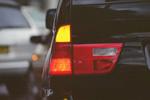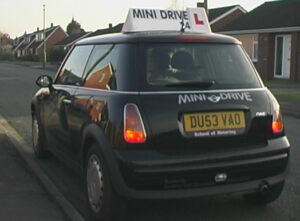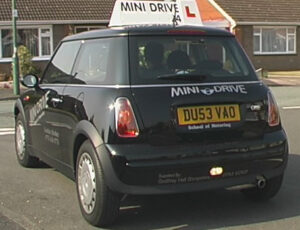Making & Responding to Car Signals
A car has several signalling devices – indicators, brake light, hazard warning light, headlights, reversing light and the car horn. These signalling devices are used by drivers to communicate to other road users what they intend to do. They help drivers “read the road”. Signals give a warning to other road users that you intend to make a manoeuvre.
Giving appropriate signals at the correct time and place and correctly interpreting the signals of other road users is important for the safety of all road users.
Your signals must be given in good time before you start your manoeuvre and for long enough for their meaning to be clear to other road users. Don’t signal too soon as this could confuse other road users.
Indicator Lights

Indicator lights are amber in colour and can be located at the front, the rear and sometimes at the side of the car on both the left and right-hand sides. You use your indicators to show an intended change of direction, whether turning left or right or moving out into traffic.
You only need to use your indicators if other road users (vehicles, cyclists or pedestrians) are visible.
Use them in good time, giving other road users plenty of time to react and adapt to your signal.
Once you have completed the manoeuvre, make sure the indicator has been cancelled, or you may confuse other road users.
Hazard Warning Lights
When you turn on your hazard warning lights, every indicator the car has begins to flash. You turn on your hazard warning lights when you need to warn other road users of a hazard. This hazard could be your car or an obstacle on the road.
Turn on your hazard lights if your car has broke down, is obstructing traffic, or to warn other road users of a hazard ahead.
Never use them when parking dangerously, illegally or whilst towing.
Brake Light Signal
When you press the brake pedal, two rear warning lights are activated. This signals to traffic behind you that you are slowing down. The brake lights are coloured red. When driving at night it is important to remember that standard rear lights are also red.
Although brake lights are brighter than the standard rear lights, you still need to pay close attention to make sure you see brake lights activated.
Another situation where brake lights can be used to give a useful warning is when stationary at road works or traffic lights, especially when in low light or low visibility conditions. When a car approaches you from the rear, press your brake pedal to activate the brake light. This will warn the driver of your presence.

Flashing Your Headlights
According to the Highway Code, the only valid use of flashing your headlights is to warn another road user of your presence.
Flashing your headlights is useful when the horn wouldn’t be heard, such as when driving at speed.
Never flash your headlights to try and intimidate other road users, and never flash your headlights to give instructions. It is common for drivers to use the headlight flash as a signal to tell another road user that the way ahead is clear. However, it is advisable such signals are ignored. How can you be certain that the way ahead is clear or that this is what the flash was communicating?
If you were to respond to flashing headlights this way or if you were to flash a driver to tell them that the way ahead is clear on your driving test would fail the test.
Arm Signals
- Stopping or slowing down – keep your right arm still.
- Stopping or slowing down – move your right arm up and down.
- Turning or moving left – move your right arm in a circular motion.
The Car Horn
Use of the horn should be limited to warning other road users who have failed to see you of your presence. Avoid aggressively sounding the horn, and remember it is illegal to use your horn whilst your car is stationary or in a built-up area between 11.30 pm and 7.00 am, except when another moving vehicle poses a danger to you.
While driving, you should never take for granted that every signal you see is being accurately used to show a driver’s intentions. Many signals are poorly used. Be cautious and wait for a secondary sign that the signal is for real.
For instance, you’re waiting to turn left out of a junction. A vehicle is approaching from the right and is signalling that it intends to turn left into the junction you are waiting at. You could pull out and continue on your way, but what if the signal is false or has been activated by mistake? To make sure the signal is for real, wait for confirmation, such as the vehicle slowing or starting to make the turn.
Reversing Signal
When a car is put into reverse gear either one or two white lights are activated at the rear of the car.

When Taking Your Driving Test
The driving test examiner will expect you to
- give signals clearly and in good time to warn other road users of intentions in accordance with the Highway Code.
- to cancel any signal after any manoeuvre has been completed.
Make sure you cancel the signal after turning – it may be that the automatic signal cancelling device, which operates after you have turned the steering wheel half a turn or so, hasn’t been activated.
Don’t signal so early that the signal becomes confusing to others, or so late that they don’t have time to react safely to it.
All signals must conform to the Highway Code.
Never flash your headlights to tell another road user you are giving way to them.
Never wave at pedestrians for them to cross the road.
